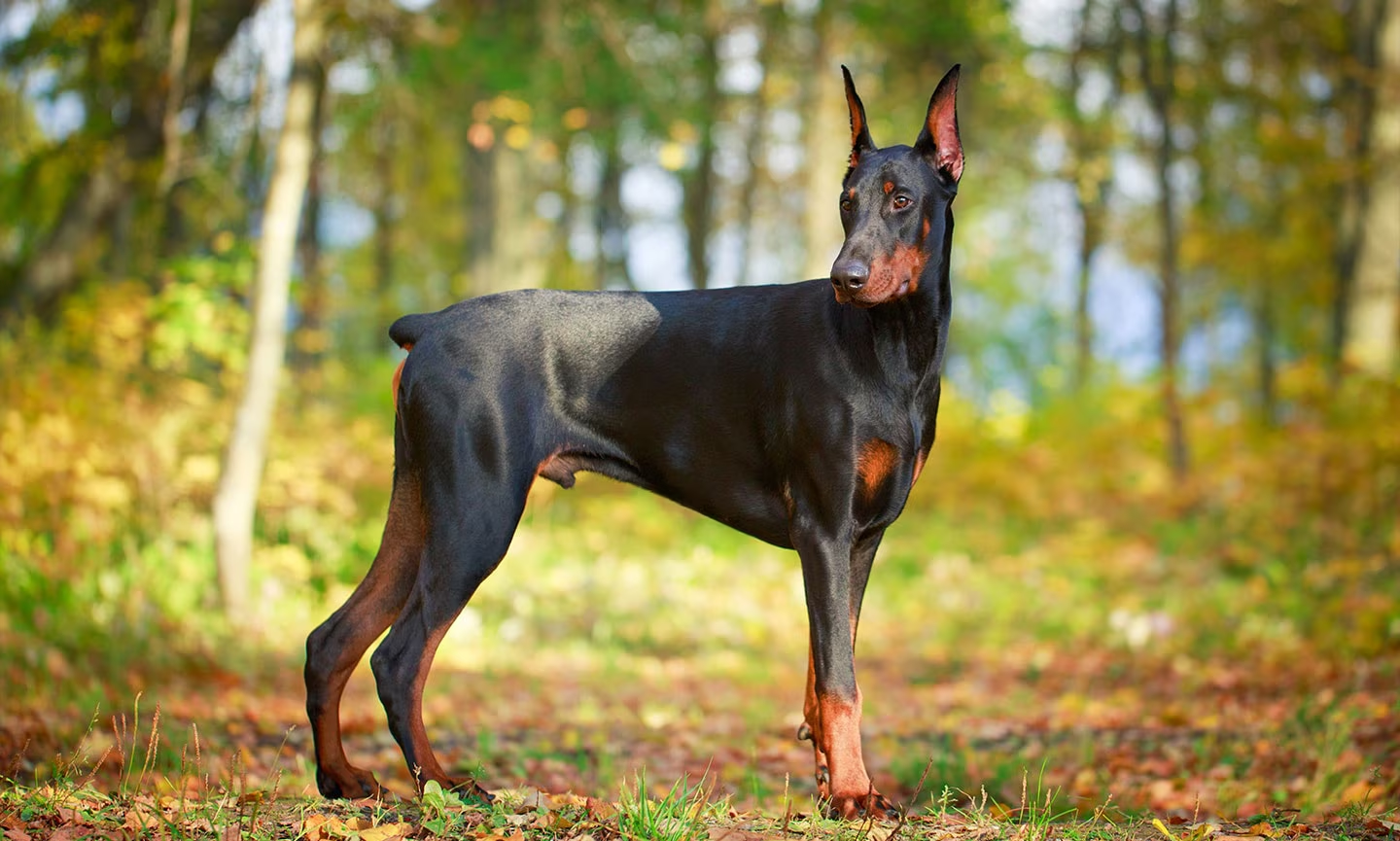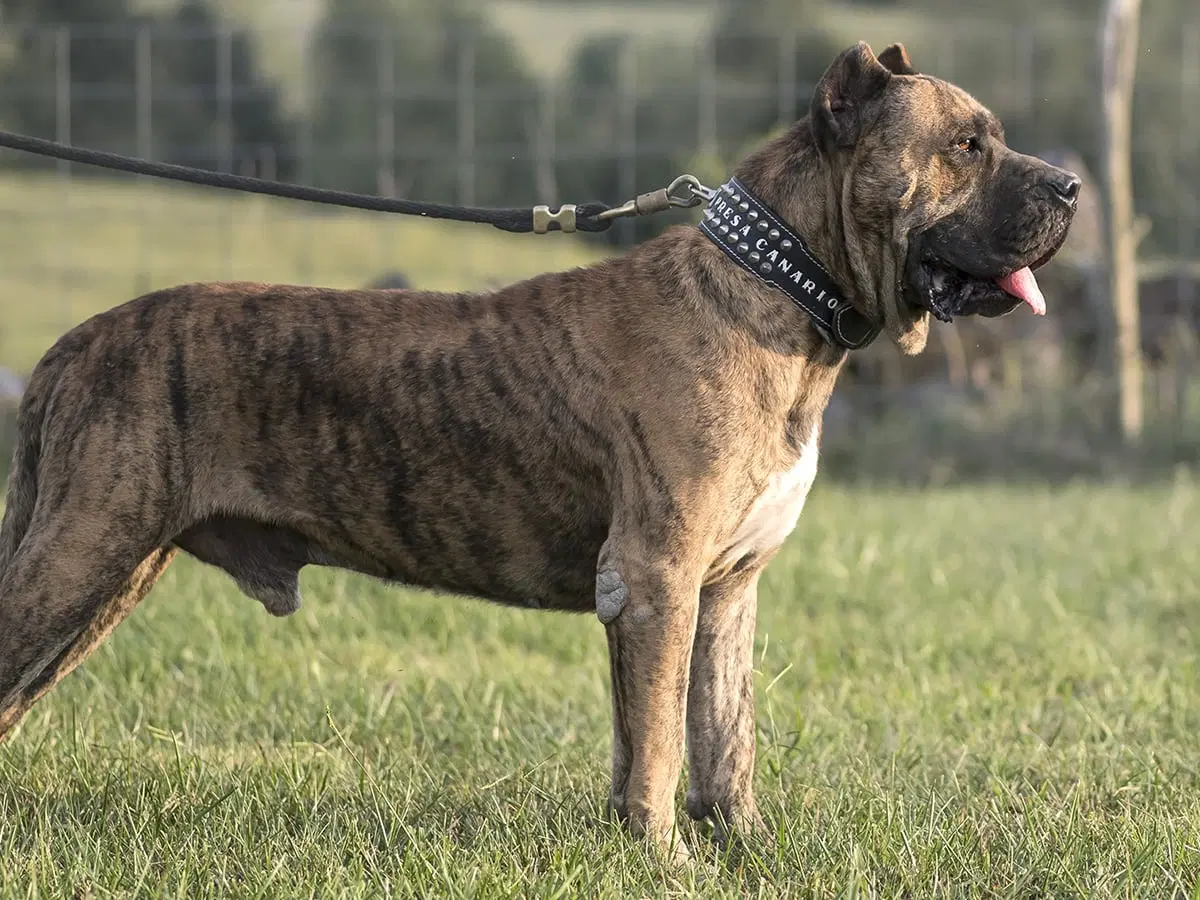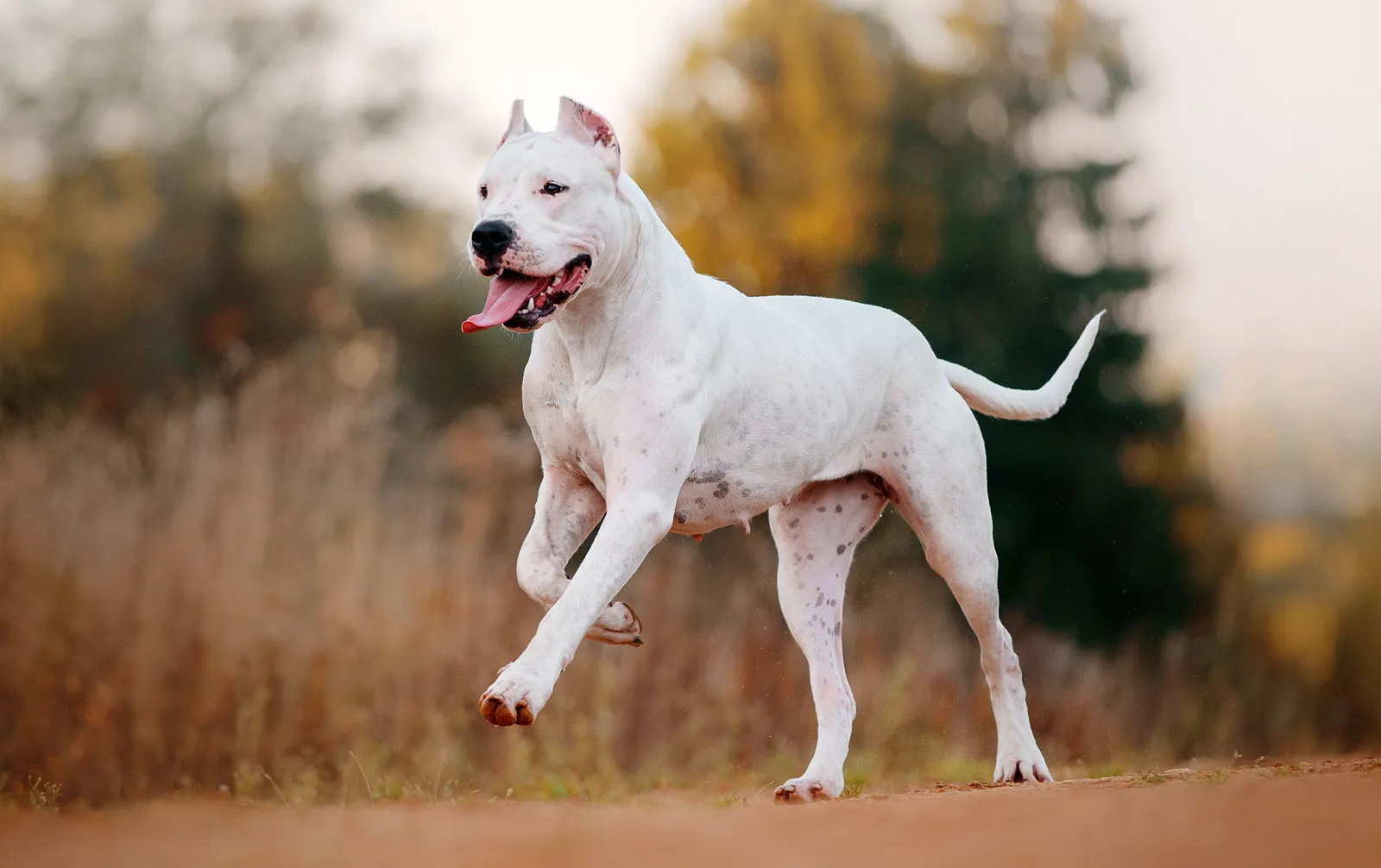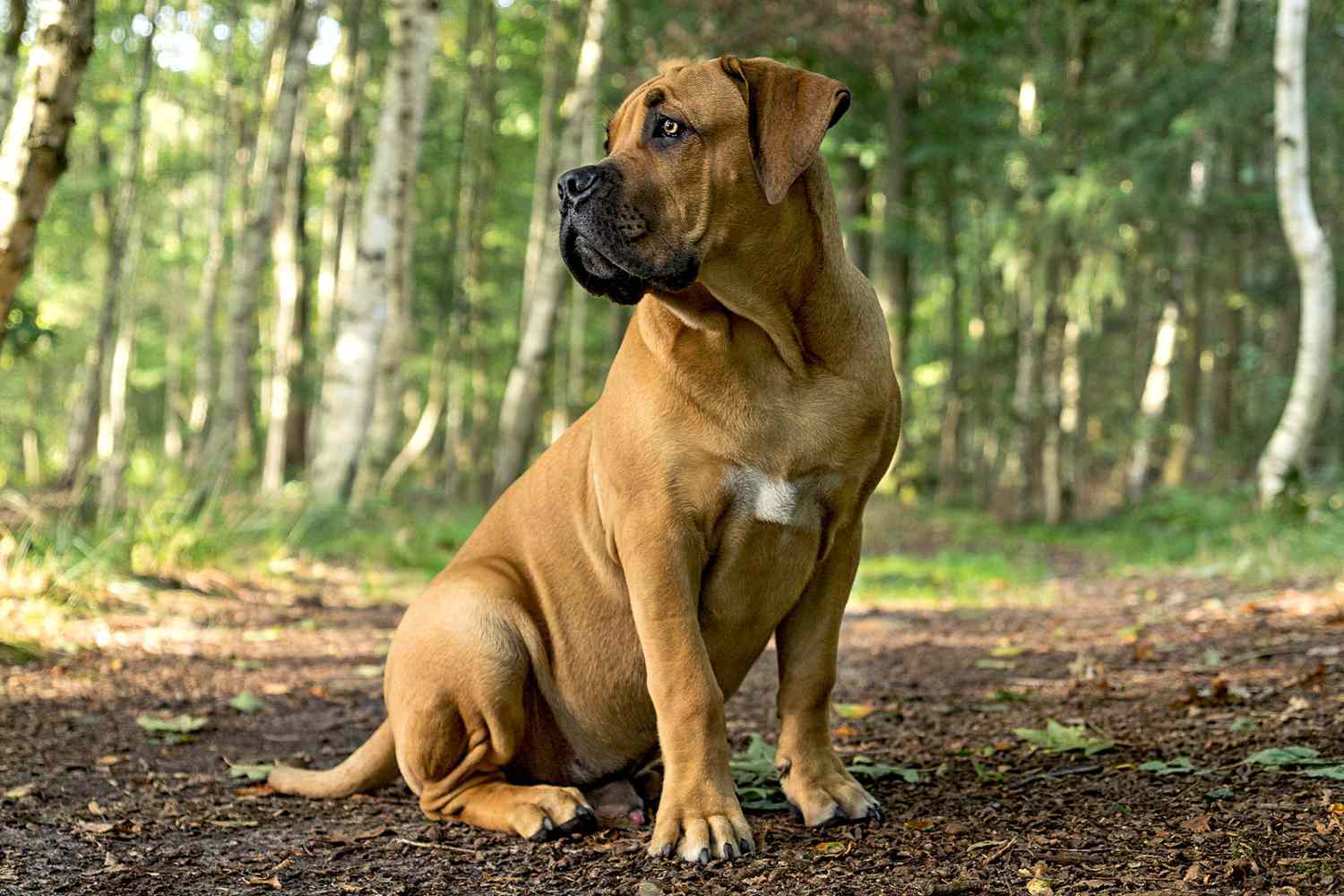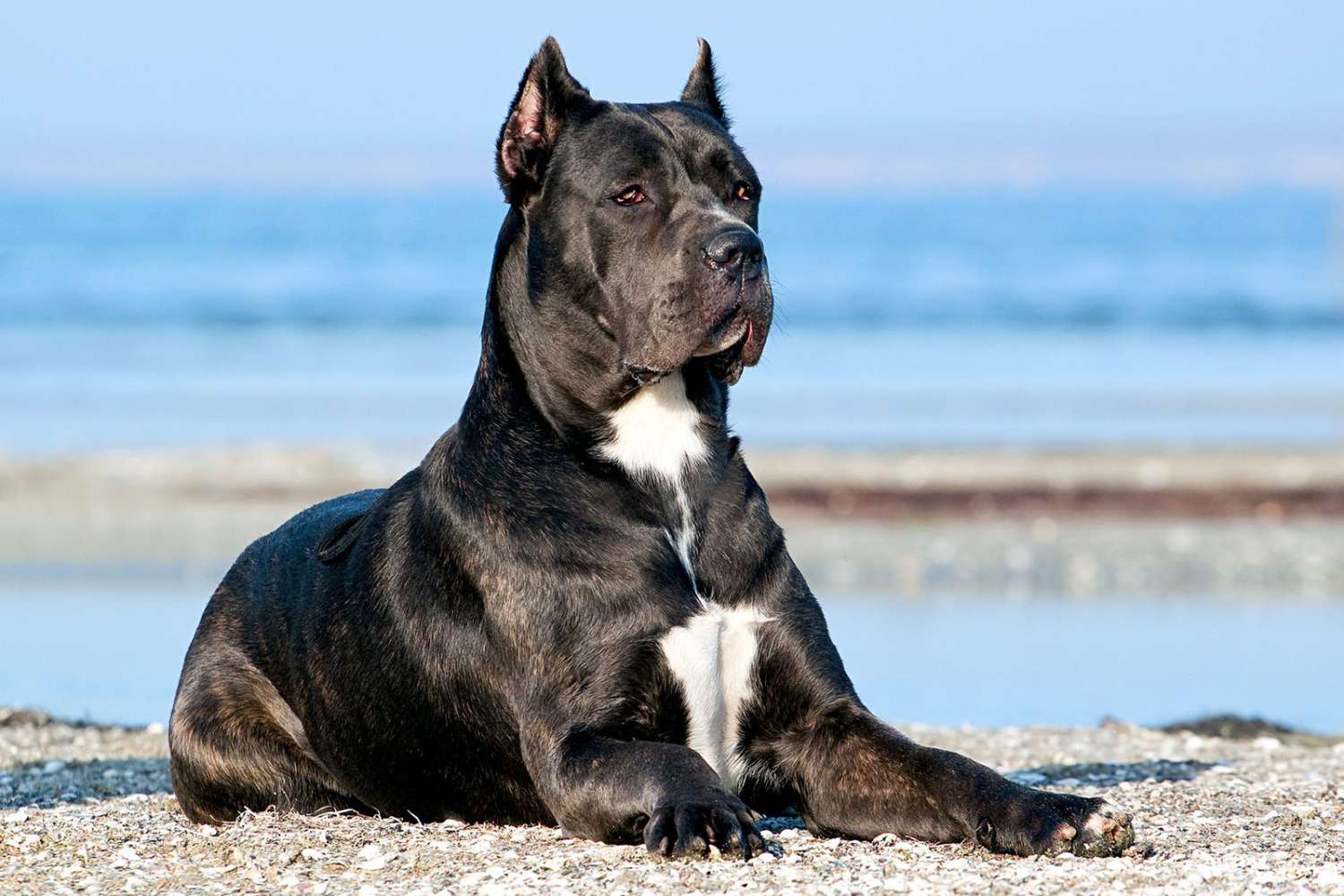Introduction: Meet the Magnificent Doberman Pinscher
OMG, you guys. Can we just take a moment to appreciate the absolute *perfection* that is the Doberman Pinscher? I’m talking about those sleek, muscular bodies, those alert, intelligent eyes, and that regal stance that literally screams “I am royalty, please act accordingly.” If dogs were supermodels, Dobermans would be strutting the runway at Milan Fashion Week while the other breeds watch from the sidelines.
I’ve been obsessed with Dobermans ever since my neighbor got one when I was a kid. I’d watch in awe as this majestic creature patrolled their yard with the confidence of a CEO and the grace of a ballet dancer. There was something almost otherworldly about how this dog could be both intimidating and incredibly beautiful at the same time.
But here’s the thing – Dobermans are so much more than just their stunning looks. These dogs are the complete package: brains, beauty, loyalty, and a work ethic that would put most humans to shame. They’ve been unfairly painted as aggressive villains in movies and TV shows when the reality couldn’t be further from the truth. Today’s well-bred and properly trained Doberman is an affectionate family companion who just happens to look like they could model for a canine version of Vogue.
Whether you’re considering adding a Doberman to your family, or you’re just fascinated by this incredible breed, I’m thrilled to take you on a deep dive into the world of these noble guardians. From their fascinating history to their unique personality traits, health considerations, and everything in between – I’m about to share all the tea on why Dobermans might just be one of the most misunderstood and magnificent breeds on the planet. Let’s get started!
The Fascinating History: From Tax Collector’s Guardian to Beloved Companion
Alright, history lovers – gather ’round because the origin story of the Doberman Pinscher is seriously like something out of a movie. Unlike ancient breeds with origins lost to time, we actually know exactly who created this magnificent breed and why – and trust me, it’s not what you’d expect.
The Doberman Pinscher was developed in the late 1800s by a German tax collector named Karl Friedrich Louis Dobermann (yes, with two n’s – the second ‘n’ got dropped in America). Now, being a tax collector in 19th century Germany wasn’t exactly the safest profession. People weren’t thrilled to see Dobermann coming to collect their money, and he often faced hostility and even threats of violence during his rounds.
Here’s where it gets interesting: Dobermann wasn’t just a tax collector – he also ran the local dog pound in Apolda, Germany, which gave him access to all kinds of dogs. Talk about a convenient side hustle for someone looking to create the perfect protection dog! With his unique position, Dobermann set out to develop a breed that would accompany and protect him during his dangerous tax-collecting journeys.
While the exact mixture of breeds used to create the Doberman remains somewhat uncertain, experts believe Dobermann likely blended several breeds including the Rottweiler (for strength and guarding instincts), German Pinscher (for alertness), Weimaraner (for scenting ability), Greyhound (for speed), and Black and Tan Terrier (contributing to the distinctive color pattern). The goal was to create an intelligent, fearless, and loyal dog with the physical capabilities to serve as an effective protector.
After Dobermann’s death in 1894, the breeding program was continued by Otto Goeller, who refined the breed further and is credited with perfecting the Doberman we know today. The breed was officially recognized in Germany, and the first breed standard was established. In 1908, the American Kennel Club (AKC) recognized the Doberman Pinscher (spelled with one ‘n’ in the U.S.).
The breed’s capabilities were quickly recognized beyond personal protection. Dobermans served with distinction in both World Wars, working as messengers, sentries, and search and rescue dogs. In fact, the United States Marine Corps adopted the Doberman as their official war dog during World War II, where these brave dogs saved countless lives. At the War Dog Memorial on Guam, there’s a tribute to the 25 Dobermans who died while serving with the Marines in the Pacific theater.
Over time, the Doberman’s role evolved from purely working purposes to that of a companion animal. Breeders began to focus not only on the dog’s working abilities but also on temperament, making them more suitable as family pets. The modern Doberman has a much softer temperament than its ancestors, though it retains the intelligence, loyalty, and protective instincts that have always been hallmarks of the breed.
Today, while Dobermans can still be found working in police and military roles, they’re much more commonly seen as beloved family companions, therapy dogs, and competitors in dog sports like obedience, agility, and tracking. From humble beginnings as a tax collector’s bodyguard to one of the most recognized and admired breeds worldwide, the Doberman’s journey is a testament to thoughtful breeding and the incredible bond between humans and dogs.
Physical Characteristics: The Epitome of Canine Elegance
If dogs were superheroes, the Doberman Pinscher would definitely be rocking a cape and saving the world with style. These dogs are the definition of athletic elegance – imagine if Olympic gymnasts and runway models somehow combined their DNA and became canines. That’s a Doberman for you.
Let’s talk stats. Male Dobermans typically stand about 26 to 28 inches tall at the shoulder and weigh between 75 to 100 pounds. Females are slightly smaller, standing 24 to 26 inches and weighing 60 to 90 pounds. But those numbers don’t really capture the impression a Doberman makes. It’s all about their proportion and presence.
The breed standard calls for a square build, meaning their body length from chest to rump should equal their height. This gives them that perfectly balanced silhouette that turns heads wherever they go. Their body is muscular but streamlined – there’s nothing bulky about a Doberman. Instead, they’re all smooth contours and powerful grace, with a deep chest, tucked-up waist, and strong, straight back.
Then there’s that distinctive head. A Doberman’s head is long and dry (meaning no loose skin), like a blunt wedge when viewed from any angle. Their dark, almond-shaped eyes convey an alert, intelligent expression that seems to miss nothing. The ears are traditionally cropped to stand erect, though in many countries ear cropping is now banned, and natural ears (which fold forward) are becoming more common. Similarly, the tail is often docked short, though natural tails are also increasingly seen due to changing regulations and attitudes about cosmetic alterations.
The Doberman’s coat is another distinctive feature – short, smooth, hard, and close-lying to the body. It’s practically maintenance-free while still managing to look glossy and sleek at all times (seriously, how unfair is that?). The breed comes in four main colors: black, red (a deep mahogany), blue (a diluted black that appears grayish), and fawn (a diluted red, sometimes called “Isabella”). All four colors feature rust markings in specific locations: on the muzzle, throat, chest, legs, feet, and below the tail.
What truly sets the Doberman apart physically is their movement. When a well-built Doberman moves, it’s poetry in motion. The gait is free, balanced, and vigorous, with good reach in the front and powerful drive from the rear. They practically float across the ground, moving with an effortless efficiency that showcases their perfect structure.
Beyond aesthetics, this physical build serves important functions. The Doberman was designed to be a working dog, capable of both speed and endurance. Their athletic build allows them to move quickly when needed, while their strength and stamina mean they can keep going all day. That deep chest houses a large heart and lungs, providing the cardiovascular capacity needed for sustained activity.
The Doberman’s physique isn’t just beautiful – it’s the perfect marriage of form and function. Every aspect of their appearance was developed with a purpose in mind, creating a dog that excels as both a working partner and a striking companion. When you see a Doberman in their prime, standing alert and confident, it’s hard not to be impressed by just how perfectly they embody canine elegance and power.
Temperament and Personality: Beyond the Stereotype
Let’s address the elephant in the room: Dobermans have gotten a seriously bad rap in popular culture. If you’ve ever seen a movie with a Doberman in it, chances are they were portrayed as the snarling guard dog or the villain’s vicious sidekick. But here’s the tea: that stereotype couldn’t be further from the reality of today’s well-bred Doberman Pinscher.
The modern Doberman is affectionately known among breed enthusiasts as a “velcro dog” – they form such intense bonds with their families that they want to be right by your side 24/7. We’re talking about a dog that will follow you from room to room, curl up next to you on the couch, and yes, even try to follow you into the bathroom. They’re not just loyal; they’re devoted with a capital D.
Don’t get me wrong – Dobermans are still excellent protectors. Their natural alertness and protective instincts mean they’ll absolutely let you know if something doesn’t seem right, and they won’t hesitate to place themselves between their loved ones and any perceived threat. But here’s the important distinction: a well-bred, properly trained Doberman doesn’t show unprovoked aggression. They’re discerning and intelligent enough to tell the difference between a real threat and normal daily activities.
Intelligence is another defining trait of the Doberman’s personality. Ranked as one of the smartest dog breeds (usually in the top 5), these brainiacs can learn commands in as few as five repetitions and obey them 95% of the time. This remarkable intelligence means they’re highly trainable, but it also means they need mental stimulation. A bored Doberman is a mischievous Doberman, and they’ll find ways to entertain themselves – often at the expense of your furniture or garden.
Despite their imposing appearance, Dobermans can be surprisingly sensitive. They form deep emotional connections with their people and are incredibly attuned to your moods. If you’re sad, don’t be surprised to find a Doberman head in your lap, offering comfort. If you’re excited, they’ll match your energy with joyful enthusiasm. This sensitivity also means they respond best to positive reinforcement training methods – harsh corrections can damage their trust and confidence.
Dobermans are also more playful than their serious image suggests. They maintain a puppylike joy well into adulthood and love interactive games that challenge both their bodies and minds. A game of fetch isn’t just physical exercise for a Dobie; it’s an opportunity to problem-solve, strategize, and bond with you.
With family, including children, well-socialized Dobermans are typically gentle and patient. They seem to innately understand that kids require different treatment, often becoming protective guardians of “their” children. That said, as with any large, powerful breed, interactions between Dobermans and young children should always be supervised, and children should be taught how to respectfully interact with dogs.
When it comes to other animals, early socialization is key. Dobermans can get along wonderfully with other pets, including cats, when raised with them from puppyhood. However, they may have a prey drive toward unfamiliar small animals, so introductions should be careful and controlled.
The bottom line? Today’s Doberman is a complex, multifaceted companion who combines alertness and protectiveness with affection and sensitivity. They’re not for everyone – their intelligence, energy, and devotion require an equally committed owner. But for those who understand and appreciate them, Dobermans offer a depth of partnership that few other breeds can match.
Training and Socialization: Raising a Well-Rounded Doberman
If there’s one thing you need to know about training a Doberman, it’s this: these dogs are basically the Harvard students of the canine world. They’re brilliant, eager to learn, and capable of mastering complex tasks with ease. But just like that super-smart kid who gets bored in class and starts causing trouble, a Doberman without proper mental stimulation and guidance can become a four-legged problem solver in all the wrong ways.
Training a Doberman should begin the moment they step paw into your home, regardless of whether they’re an 8-week-old puppy or an adult rescue. These dogs thrive on clear expectations, consistent rules, and positive reinforcement. Their intelligence means they quickly pick up on patterns and commands, but it also means they’ll test boundaries and look for loopholes if training is inconsistent.
One of the most effective approaches for Doberman training is relationship-based training that emphasizes mutual respect and communication. These sensitive dogs form strong bonds with their handlers and genuinely want to please them. Harsh corrections or punishment-based training methods can backfire spectacularly with Dobermans, potentially damaging their confidence or creating fear-based responses. Instead, reward-based methods that celebrate successes will bring out the best in these eager-to-please powerhouses.
Basic obedience commands like sit, stay, come, and leave it are absolutely essential for a dog with the Doberman’s size and strength. But don’t stop there – Dobermans excel at advanced training and dog sports like obedience competitions, rally, agility, tracking, and protection work. These activities not only provide crucial mental stimulation but also strengthen the bond between dog and handler.
Just as important as formal training is socialization – the process of exposing your Doberman to a wide variety of people, animals, environments, and situations in a positive way. This is particularly crucial for a breed that has natural protective instincts. A well-socialized Doberman can confidently navigate the world, distinguishing between normal situations and genuine threats.
Socialization should begin early (while still being mindful of vaccination schedules) and continue throughout your dog’s life. Introduce your Doberman to people of different ages, appearances, and behaviors. Expose them to various environments – urban areas, parks, different floor surfaces, stairs, elevators – anything they might encounter in daily life. Controlled introductions to other friendly, vaccinated dogs will help develop appropriate canine social skills.
One aspect of training that’s often overlooked is teaching appropriate protective behavior. Dobermans are natural guardians, but without guidance, they may make poor judgments about what constitutes a threat. A well-trained Doberman should be alert and watchful but calm and discerning – not reactive or fearful. This balance requires ongoing work and clear communication between dog and owner.
Another key element is teaching self-control and impulse control. Games like “leave it,” “wait,” and “place” help Dobermans learn to manage their impulses and look to their humans for guidance. These exercises harness the Doberman’s natural desire to work with their person while teaching valuable life skills.
For Doberman owners, training isn’t just about teaching commands – it’s about building a partnership based on clear communication and trust. When this relationship is established, the Doberman becomes not just an obedient companion but a thinking partner who can make good decisions even when not explicitly directed. This level of training takes time, consistency, and patience, but the result – a confident, well-mannered Doberman who navigates the world with grace – is absolutely worth the investment.
Exercise and Activity: Meeting the Needs of an Athletic Breed
If the Doberman Pinscher had a dating profile, “long walks on the beach” wouldn’t just be a cliché – it would be the bare minimum requirement. These dogs aren’t just active; they’re athletic powerhouses with energy reserves that would make an Energizer Bunny jealous. Thinking of adding a Doberman to your Netflix-and-chill lifestyle? You might want to reconsider, or at least invest in some running shoes.
Dobermans were bred to work, and that work ethic translates into a high energy level that requires proper outlets. Without adequate physical exercise and mental stimulation, these intelligent dogs can become frustrated, anxious, and destructive. I’m talking about redecorated living rooms, excavated gardens, and possibly some avant-garde furniture renovations you definitely didn’t authorize.
So what does “adequate exercise” look like for a Doberman? As a baseline, expect to provide at least 1-2 hours of activity daily. This should include both physical exercise and mental challenges. A quick potty walk around the block isn’t going to cut it – these dogs need substantial activity that engages both body and mind.
Physical exercise options that work well for Dobermans include:
- Jogging or running (once they’re fully grown and their joints have developed)
- Hiking on varied terrain
- Swimming (many Dobermans are natural water lovers)
- Playing fetch or frisbee in a securely fenced area
- Structured play sessions with compatible dog friends
Beyond just physical activity, Dobermans thrive when given opportunities to use their impressive mental capabilities. Dog sports provide an excellent outlet for both physical and mental energy while strengthening the bond between dog and handler. Dobermans often excel at:
- Obedience competitions
- Agility
- Rally
- Tracking
- Scent work
- Protection sports (when properly trained)
Even if you’re not interested in competitive dog sports, incorporating training elements into daily exercise can make activities more engaging for your Doberman. Practice obedience commands during walks, set up backyard obstacle courses, or use toys that require problem-solving skills to access treats.
It’s worth noting that energy levels can vary somewhat within the breed. Some Dobermans are more moderate in their exercise needs, while others seem to have endless stamina. Age also plays a factor – young Dobermans typically have the highest energy levels, which gradually moderate as they mature. Senior Dobermans still need regular exercise but may prefer shorter, less intense activities.
When exercising your Doberman, keep a few important considerations in mind. First, these dogs are extremely loyal and tend to push themselves to keep up with their owners, sometimes beyond what’s healthy. It’s your responsibility to monitor for signs of fatigue, overheating, or joint strain, especially in young or older dogs.
Second, despite their athleticism, Dobermans can be prone to certain health issues that may impact exercise. Dilated cardiomyopathy (a heart condition) is relatively common in the breed, and affected dogs may need modified exercise regimens. Similarly, dogs with von Willebrand’s disease (a blood clotting disorder) may need to avoid activities with a high risk of injury.
Lastly, remember that Dobermans are sensitive to extreme temperatures. Their short coats offer little protection from cold weather, and their deep chests can make them susceptible to overheating in hot conditions. Exercise should be adjusted accordingly, with activities moved to cooler times of day during summer months and protective gear (like dog coats) considered for winter activities.
The good news? An appropriately exercised Doberman is a joy to live with – calm, balanced, and content to relax at home once their needs have been met. The investment in proper exercise pays dividends in the form of a well-adjusted companion who can settle down when it’s time to chill but is always ready for the next adventure.
Grooming: Low Maintenance Beauty
One of the many perks of living with a Doberman Pinscher is their incredibly low-maintenance coat. While some dog owners are battling tumbleweeds of fur and scheduling regular grooming appointments that cost more than their own haircuts, Doberman owners are just over here living their best lives with one of the easiest breeds to keep looking fabulous.
Let’s start with the basics: Dobermans have a short, sleek, smooth coat that lies close to the body. There’s no undercoat to blow out seasonally (hallelujah!), and the hair is naturally glossy and dense. This coat does more than just look good – it’s designed to protect the dog while requiring minimal maintenance, allowing these working dogs to focus on their jobs rather than beauty routines.
Despite their reputation as “wash and wear” dogs, Dobermans do shed – they’re just more moderate shedders compared to many other breeds. You’ll find some short hairs on your clothes and furniture, but nothing like the fur snowstorms that come with heavy shedders like German Shepherds or Huskies.
Here’s a quick rundown of the Doberman’s grooming needs:
- Brushing: A weekly once-over with a rubber curry brush or grooming mitt is usually sufficient to remove loose hairs and distribute skin oils for a healthy shine. During seasonal transitions (spring and fall), you might want to brush a little more frequently as shedding may increase slightly.
- Bathing: Dobermans are naturally clean dogs with minimal “dog odor.” Most do fine with a bath every 6-8 weeks, or even less frequently if they’re not getting particularly dirty. Over-bathing can strip the natural oils from their coat, so unless your Dobie has found something delightfully stinky to roll in, don’t rush to the tub too often.
- Nail care: Regular nail trims are important for any dog, and Dobermans are no exception. Active dogs may naturally wear down their nails somewhat, but most will still need regular trimming to keep nails at a comfortable length. Long nails can affect gait and potentially cause pain or structural issues over time.
- Ear care: Whether your Doberman has cropped or natural ears, regular cleaning is important. Check ears weekly for signs of redness, odor, or excessive wax that might indicate infection. Dogs with cropped ears tend to have fewer ear infections due to better air circulation, but they still need attention.
- Dental care: Dental health is crucial for all dogs. Regular tooth brushing (ideally daily, but at least several times a week) with dog-specific toothpaste helps prevent periodontal disease and keeps breath fresher.
One grooming consideration that’s somewhat unique to Dobermans is the care of cropped ears, if your dog has them. During the posting process (when ears are being trained to stand erect after cropping), careful maintenance of the posts and tape is necessary. This is typically done under veterinary guidance initially, with owners taking over the routine as the ears begin to stand. It’s worth noting that ear cropping is becoming less common and is even banned in many countries as attitudes about cosmetic procedures for dogs evolve.
For showing purposes, some owners or handlers may do additional grooming to perfect the Doberman’s already sleek appearance. This might include using a chamois cloth to bring out the coat’s natural shine or carefully trimming a few stray hairs around the ears, feet, or whiskers. For the average pet Doberman, however, this level of detailing is entirely optional.
While their physical grooming needs are minimal, Dobermans do benefit from the bonding that grooming sessions provide. These connection-oriented dogs enjoy the one-on-one attention of a gentle brushing session or even a “spa day” with a massage worked into the routine. It’s also a good opportunity to check your dog over for any unusual lumps, bumps, or skin issues.
The bottom line? If you’re looking for a dog that combines striking good looks with minimal grooming requirements, the Doberman might just be your perfect match. Their wash-and-wear coat means more time for adventures and cuddles, and less time wrestling with brushes, combs, and professional groomers!
Health Considerations: Protecting Your Doberman
As much as I wish I could tell you that Dobermans are invincible superheroes, the reality is that like all purebred dogs, they do have some breed-specific health concerns that potential and current owners should be aware of. Knowledge is power, especially when it comes to keeping your four-legged family member healthy and happy for as long as possible.
The average lifespan of a Doberman Pinscher is typically between 10-13 years. While this is fairly standard for a large breed dog, there are steps you can take to help your Doberman live the longest, healthiest life possible.
Let’s talk about the most significant health issues that can affect Dobermans:
- Dilated Cardiomyopathy (DCM): This serious heart condition is unfortunately common in Dobermans, with some studies suggesting that up to 50% of European Dobermans may be affected during their lifetime. DCM causes the heart to enlarge and lose pumping efficiency, potentially leading to heart failure or sudden death. Regular cardiac screening (including echocardiograms and Holter monitoring) is recommended, starting at around 2 years of age and continuing throughout the dog’s life.
- Von Willebrand’s Disease (vWD): This inherited blood clotting disorder can cause excessive bleeding from minor injuries or during surgical procedures. A genetic test is available to identify carriers and affected dogs, and responsible breeders test their breeding stock.
- Wobbler Syndrome (Cervical Spondylomyelopathy): This neurological condition affects the cervical (neck) spine and spinal cord, causing wobbling or unsteady gait, weakness, and neck pain. Treatment may include medication, activity restriction, or surgery in severe cases.
- Hip Dysplasia: While not as prevalent in Dobermans as in some other large breeds, hip dysplasia can occur. This developmental condition causes improper formation of the hip joint, leading to arthritis and mobility issues over time.
- Hypothyroidism: An underactive thyroid gland can cause weight gain, lethargy, skin problems, and other symptoms. Regular thyroid testing is recommended for Dobermans, and the condition is typically manageable with daily medication.
- Gastric Dilatation-Volvulus (GDV or Bloat): Like many deep-chested breeds, Dobermans are at risk for this life-threatening emergency in which the stomach fills with gas and twists on itself. Preventive measures include feeding smaller meals throughout the day, avoiding exercise immediately after eating, and sometimes prophylactic surgery (gastropexy) to tether the stomach and prevent twisting.
- Color Dilution Alopecia: This condition primarily affects blue and fawn (Isabella) Dobermans, causing hair loss and skin problems in areas with diluted color. It’s not life-threatening but can affect quality of life and requires ongoing management.
Now for the good news – there are many steps you can take to promote your Doberman’s health:
- Choose a reputable breeder: If you’re getting a Doberman puppy, select a breeder who conducts appropriate health testing on their breeding stock and is committed to improving the breed. Ask for documentation of health clearances for conditions like vWD, hip dysplasia, and cardiac screening.
- Regular veterinary care: Annual (or biannual for seniors) veterinary check-ups are essential. For Dobermans, these should include cardiac evaluations and may include additional screenings based on age and risk factors.
- Appropriate nutrition: Feed a high-quality diet appropriate for your dog’s age, activity level, and any specific health needs. Avoid overfeeding, as obesity can exacerbate joint problems and put additional strain on the heart.
- Proper exercise: Regular, appropriate exercise helps maintain muscle tone, cardiovascular health, and appropriate weight. However, exercise should be tailored to the individual dog’s health status and age.
- Dental care: Regular tooth brushing and professional cleanings when needed help prevent periodontal disease, which can impact overall health.
- Weight management: Keeping your Doberman at an appropriate weight reduces stress on joints and organs and promotes overall health and longevity.
- Preventive care: Stay current with vaccinations, parasite prevention, and other preventive measures recommended by your veterinarian.
It’s worth noting that health issues can vary somewhat based on bloodlines and geographical regions. North American Dobermans may have slightly different health profiles than European lines, for example. This makes it all the more important to research and work with reputable breeders or rescue organizations who are knowledgeable about the specific health concerns in their lines.
While the list of potential health issues might seem daunting, it’s important to remember that not every Doberman will develop these conditions, and many live long, healthy lives with appropriate care. Being aware of breed-specific health concerns allows you to be proactive about prevention and early detection, giving your Doberman the best chance at a long, active, and comfortable life by your side.
Finding Your Doberman: Adoption and Responsible Breeding
So you’ve fallen head over heels for the Doberman Pinscher (and honestly, who could blame you?), and you’re ready to welcome one of these magnificent dogs into your life. This is a major decision that deserves careful consideration – after all, we’re talking about a commitment of 10+ years to a highly intelligent, energetic companion who will become an integral part of your family. Let’s explore the best ways to find your perfect Doberman match.
First, let’s address the adoption vs. breeder question. There’s no one-size-fits-all answer here – both paths can lead to a wonderful companion if you do your homework and proceed with care.
Adoption: Giving a Second Chance
Contrary to what some might think, purebred Dobermans do end up in shelters and rescue organizations. Sometimes life circumstances change – owners pass away, families relocate to housing that doesn’t allow large dogs, or financial situations shift. Other times, people acquire Dobermans without fully understanding the breed’s needs and find themselves overwhelmed.
Breed-specific rescues like Doberman Rescue Unlimited, Doberman Pinscher Rescue, and many regional Doberman rescue organizations specialize in rehoming these dogs. These groups typically have a good understanding of the breed and work hard to match dogs with appropriate homes. You can also check general shelters and all-breed rescue groups, though you might need to be patient to find a Doberman.
Adoption advantages include:
- Giving a deserving dog a second chance at a loving home
- Lower initial cost compared to purchasing from a breeder
- Many rescue Dobermans are already house-trained and have some basic obedience
- Adult dogs’ personalities are already developed, so you have a better idea of what you’re getting
- Rescue organizations often provide support and resources for the transition
When adopting, be prepared for a thorough application process. Reputable rescues want to ensure their dogs go to appropriate homes, so expect home visits, references, and detailed questions about your lifestyle and experience. This is a good thing – it means the organization cares about making successful matches!
Responsible Breeders: Supporting Ethical Breeding Practices
If you’re set on a puppy or have specific needs that would be best met by knowing a dog’s full history and genetic background, working with a responsible breeder is the way to go. The key word here is “responsible” – there’s a world of difference between ethical breeders who are dedicated to improving the breed and those who are simply producing puppies for profit.
A responsible Doberman breeder:
- Conducts health testing on breeding stock, including cardiac screening, tests for von Willebrand’s Disease, hip evalu
